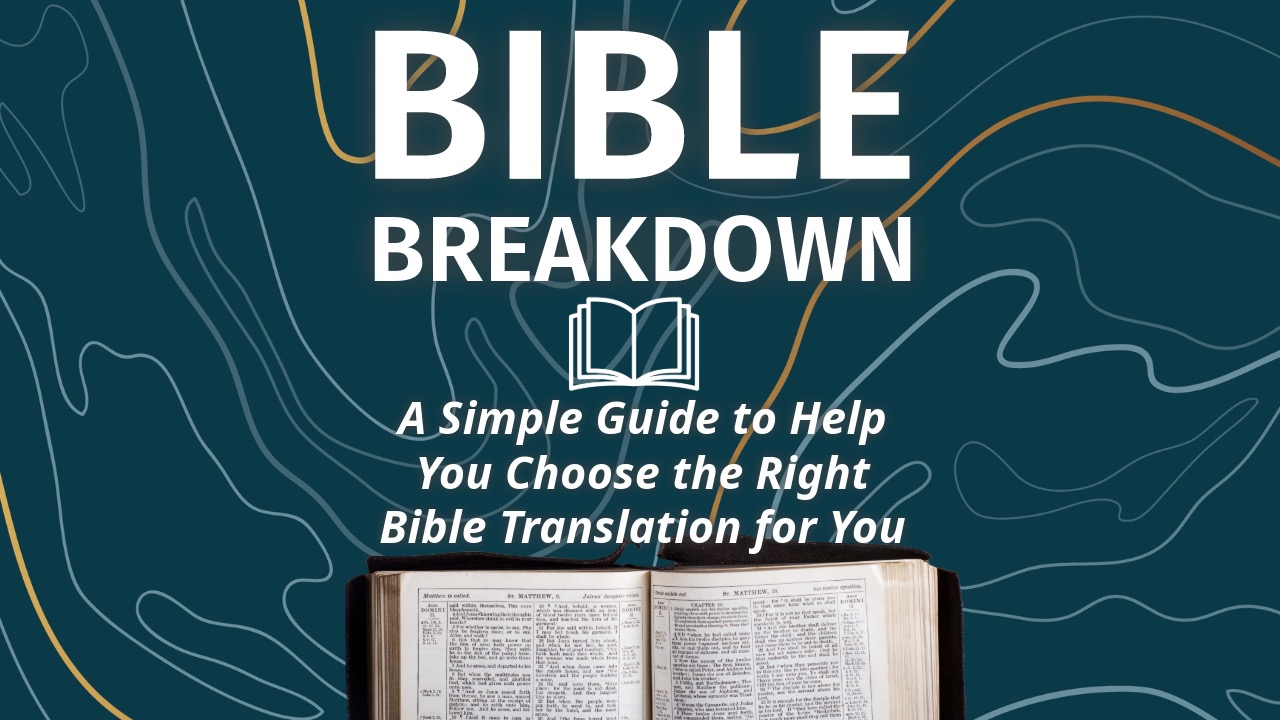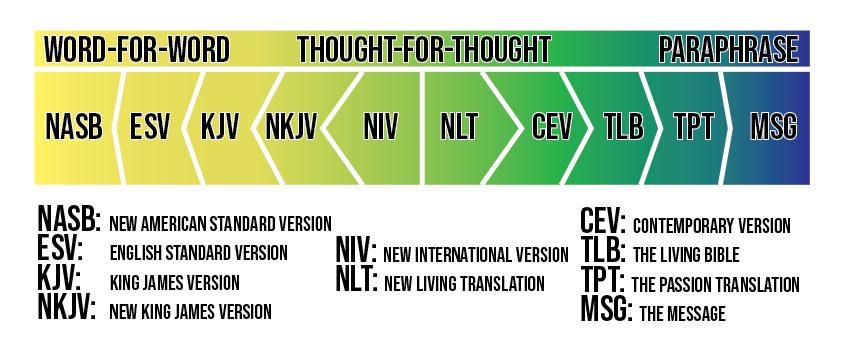Bible Breakdown: A Simple Guide to Help You Choose the Right Bible Translation for You
Looking for a New Bible but struggling to choose from the huge range of translations and versions? Maybe you’ve had a look on Amazon or in a Christian Bookshop but are still none the wiser. Rest assured, you’re not alone. This simple guide is designed to help you navigate the multitude of choices.

Why Are There So Many Translations?
The Bible wasn’t written in English but in Ancient Hebrew, Aramaic and Koine Greek. Those languages are not still in use today (though a modern version of Hebrew has been revived). The art of translation is a tightrope walk between literal accuracy and contemporary clarity. Every Bible version is an attempt at finding the perfect balance for its intended audience. Languages evolve, contexts change, and Biblical scholarship advances leading to the emergence of new or revised translations of the original text. There are three main approaches when it comes to Bible translation. Word-for Word, Thought-for-Thought and Paraphrase. We’ll take a brief look at each.
Word-for-Word Translations
Word-For Word Translations include the King James Version (KJV) and the English Standard Version (ESV). They aim to be as close to the original languages as possible. Each word from the Hebrew, Aramaic or Greek is is translated into the closest possible corresponding English word. The main benefit of this kind of translation is that it can allow you to undertake deep study and analysis of the text, trusting that the words you’re reading accurately reflect the source. The drawback of this approach is that translating phrases or figures of speech from 3,000 years ago in a word-for-word way may work against you understanding what the original writer intended. For example, today you might hear a Dub say “I will, yeah”. If you’re from the area you’ll know that means the complete opposite! Now, imagine someone wrote down a conversation between two Dubs that included that phrase and 3000 years form now someone on the other side of the came across it and translated it into their language. A Word-for-Word translation would just be confusing. That’s where Thought-for-Thought Translations come in.
Thought-for-Thought Translations
Thought-for-Thought translations include the New International Version (NIV) and the New Living Translation (NLT). They aim to represent the thoughts expressed in the original texts in a way that makes sense in the target language, which often means a less direct word-for-word translation. The focus is on rendering the text so that it has the same impact on modern readers that it would have had on the original audience. Examples include the New International Version (NIV) and New Living Translation (NLT). These translations are easier to understand than Word-for Word versions and can convey the meaning of the text in a way that modern readers can relate to. One potential downside of this approach though is that some degree of interpretation by the translators is involved, which might reflect certain theological biases or diminish the precision of the original language.

Paraphrase Translations
Paraphrased translations include the Message Version (MSG) and The Passion Translation (TPT) and are super casual and conversational. Here an author has sought to express the meaning of the original text in modern language. They are very easy to read and can be a good starting point for exploring biblical truths, though I like to think of them like a sermon rather than a Bible translation, Presenting the authors understanding of the Biblical text rather than the text itself
So Which One Should You Choose?
So, armed with that understanding let me make some recommendations. A life immersed in and informed by scripture is what we’re after so it’s important that you find a translation that is both trustworthy and understandable.
A Note on Paraphrase Versions
I don’t recommend using a paraphrase version (MSG, TPT) as your main Bible. By all means, use them as a supplemental resource -they can offer fresh insights and help make connections in ways that more literal translations might not – but they are too subjective to be your only, or main Bible.
Best Bible Translations for Preaching and Teaching
If you intend to preach or teach I recommend using a Word-For-Word translation. Preaching and Teaching often involve examining the meaning of individual words and phrases in a passage and if you are to do so it’s important to know that the translation mirrors the original text as closely as possible. Personally, I use the English Standard Version for preaching and teaching and for my daily reading. I find it a good mix of readability and reliability.
Discovering the Version that Suits You
Outside of those recommendations it comes down to personal preference and finding a translation that helps you connect with God. The best Bible translation for you is the one you’ll actually read! Many people find that the Thought-For-Thought translations like the NIV or NLT offer the ideal middle ground. I often use them both for devotional reading and spending time with the Lord and they’re great.
I’d suggest selecting a chapter of scripture and going to a website like https://www.biblegateway.com/ where you can read it for free in many different translations. Take the time to do so and see which one strikes the right balance of accuracy and readability for you.
Join the Community Bible Discussion
We are a church committed to being shaped by scripture. Please join our Bible Reading Plan where we work through the scriptures chapter by chapter in community. Feel free to leave a comment below or reach out with any questions you may have. We’d love to hear form you and know what your favourite translation is.


